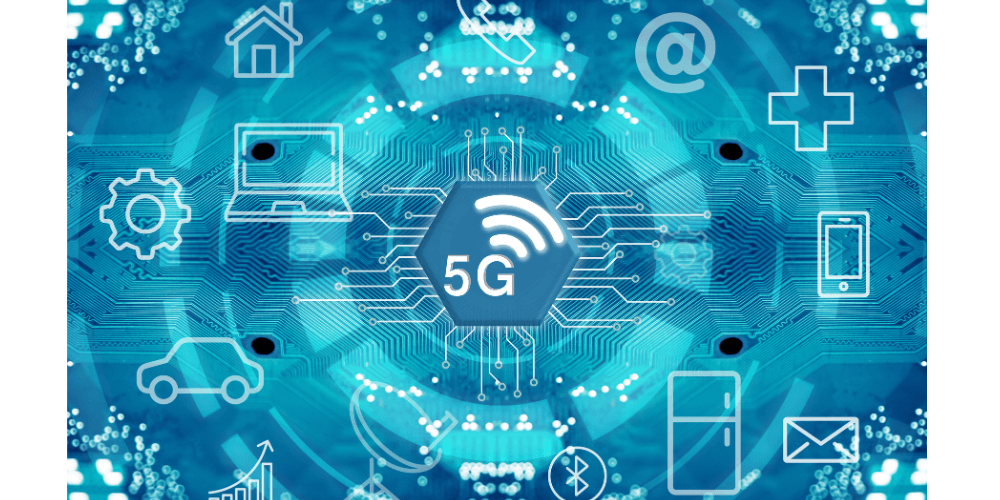The fifth generation, 5G of cellular network technology, has arrived with the promise of transforming how we live. No longer just about smartphones, 5G\’s impact will be felt across every aspect of our lives, from work and leisure to healthcare and city management. Let\’s explore what 5G is, its daily uses, its pros and cons, and how it transforms the real world.
What is the 5G Network?
5G isn\’t just a simple upgrade from 4G; it\’s a significant leap forward in wireless technology. Here are the key characteristics of 5G:
- Ultra-Fast Speeds: 5G can reach peak speeds approximately 100 times faster than its predecessor, 4G. It enables rapid downloads, seamless 4K (or even 8K!) video streaming, and incredibly responsive online experiences.
- Low Latency: Latency means the delay in data transfer. 5G drastically reduces latency, reaching levels of just a few milliseconds. Real-time interaction becomes a reality, crucial for things like remote surgery and self-driving cars.
- Massive Capacity: 5G networks can handle a significantly greater number of connected devices. It translates into the ability to support the boom of smart devices, enabling seamless connections within the Internet of Things (IoT).
5G in Your Daily Life
5G\’s influence in our daily lives is expanding rapidly:
- Enhanced Communication: Faster 5G speeds and reduced latency create nearly lag-free video calls, smooth online gaming, virtual reality (VR) and immersive augmented reality (AR) experiences.
- Revolutionized Work: 5G can facilitate massive remote collaboration. Employees can access large files, utilize cloud-based software, and experience high-definition video conferencing with colleagues worldwide without disruptions.
- Entertainment and Media: High-speed downloads and smooth streaming mean movies and games become available in seconds—no more buffering. 5G paves the way for immersive real-time events and interactive entertainment.
- More Innovative Homes and Cities: 5G powers a vast array of smart home devices, like security systems and appliances. More importantly, it forms the backbone of \’smart cities\’, enhancing traffic management, optimizing energy grids, improving public services, and fostering innovation.
Pros and Cons of 5G
Like any significant technological shift, 5G comes with both advantages and challenges:
Pros
- Unprecedented Speed and Responsiveness: Faster downloads, reduced lag, and real-time interactions open up new possibilities in various industries and aspects of life.
- Boosted Innovation: 5G can power revolutionary technological advancements in areas like AI, robotics, and automation.
- Economic Growth: Widespread 5G adoption is expected to fuel economic growth by creating new jobs and business opportunities.
- Increased Accessibility: 5G can help bridge the digital divide, improving connectivity to underserved areas.
Cons
- Deployment Costs: Upgrading to 5G requires significant investment in infrastructure, making it an expensive rollout.
- Limited Coverage: 5G coverage, particularly high-frequency 5G, still needs to be more widely available than 4G networks, especially in rural areas.
- New Security Risks: The expanded connectivity and network complexity with 5G can introduce new cybersecurity vulnerabilities.
- Compatibility: Older devices may require users to upgrade as they may not be compatible with 5G networks.
5G in the Real World: Examples of the Benefits
The impact of 5G is already visible in several fields:
- Healthcare: 5G enables remote surgeries, where doctors use high-definition video and robotic tools with real-time feedback. It also facilitates remote patient monitoring and the use of wearable health devices.
- Manufacturing: Smart factories are using 5G powers. Connected sensors and robots optimize production, improve supply chain efficiency, and enable predictive maintenance to minimize downtime.
- Transportation: Self-driving cars and connected traffic systems rely heavily on 5G\’s speed and low latency to make real-time decisions, improving traffic flow and enhancing safety.
- Retail: 5G in retail drives innovation. It enables AR applications for virtual product try-on experiences and analyzes data to personalize shopping and optimize inventory.
- Immersive Education: AR and VR-enabled 5G can reshape education with interactive simulations and remote learning experiences.
The Future of Connectivity
The potential future applications of 5G are even more exciting. Here are a few areas where we will likely see transformational changes:
- Fully Autonomous Vehicles: While self-driving cars are already a reality, their widespread adoption and complex decision-making processes will massively benefit from 5G\’s real-time communication capabilities.
- Advanced Robotics: 5G will facilitate enhanced machine control and collaboration between robots, ushering in new levels of efficiency and flexibility in various sectors.
- Telemedicine Expansion Beyond remote surgeries, 5G-powered wearables and connected devices will revolutionize healthcare. Patients, especially those in remote regions, can access specialist consultations and personalized monitoring.
- Smart Agriculture: 5G will enable real-time data collection, automated irrigation systems, and drone-based crop monitoring to optimize yields and reduce environmental impact.
- Immersive Entertainment: 5G will redefine entertainment with highly interactive cloud-based gaming, location-based AR experiences, and live events beamed directly to headsets or devices with a 360-degree view.
Addressing the Challenges
For 5G\’s full potential to be unlocked, there are several challenges to address:
- Infrastructure Investment: The cost of upgrading infrastructure to a nationwide 5G network is considerable. Collaboration between government and private sectors will be necessary.
- Bridging the Digital Divide: Ensuring impartial access to 5G, particularly in rural and underserved areas, is crucial to prevent further economic and social gaps.
- Security and Privacy: With more devices and data flowing through networks, robust security measures are crucial to protect against cyberattacks and safeguard user privacy.
- Device Compatibility and Affordability: Wider adoption of 5G will depend on the availability of affordable 5G-enabled devices and incentives to help people upgrade if necessary.
Navigating the 5G Landscape
The shift towards 5G is undoubtedly exciting, but consumers need clarity about its availability and applications. Here are a few tips:
- Check Coverage: Before investing in a 5G device, verify coverage in your area. Major cell carriers provide coverage maps on their websites.
- Understand Your Needs: Consider if you genuinely need the fastest 5G speeds. If your smartphone use is primarily basic calls, texts, and simple apps, a 4G network may suffice for the time being.
- Do Your Research: Stay updated on the latest developments, especially device releases offering new capabilities that tap into 5G.
Embracing the 5G Era
5G isn\’t just about faster connections; it\’s ultimately about the new experiences and societal improvements it makes possible. While still in its relatively early stages, 5G can transform how we live, work, learn and interact with the world around us.
Conclusion
5G technology is inevitable in revolutionizing various areas of modern life. While there are challenges, such as the expense of implementation and potential security risks, its potential positive impacts are immense.
Disclaimer
The information provided in this blog is for general knowledge only. While we endeavour to keep the information up-to-date and correct, we make no representations or warranties about its accuracy or suitability for a specific purpose. Please conduct your own thorough research and due diligence before making decisions based on this information.


